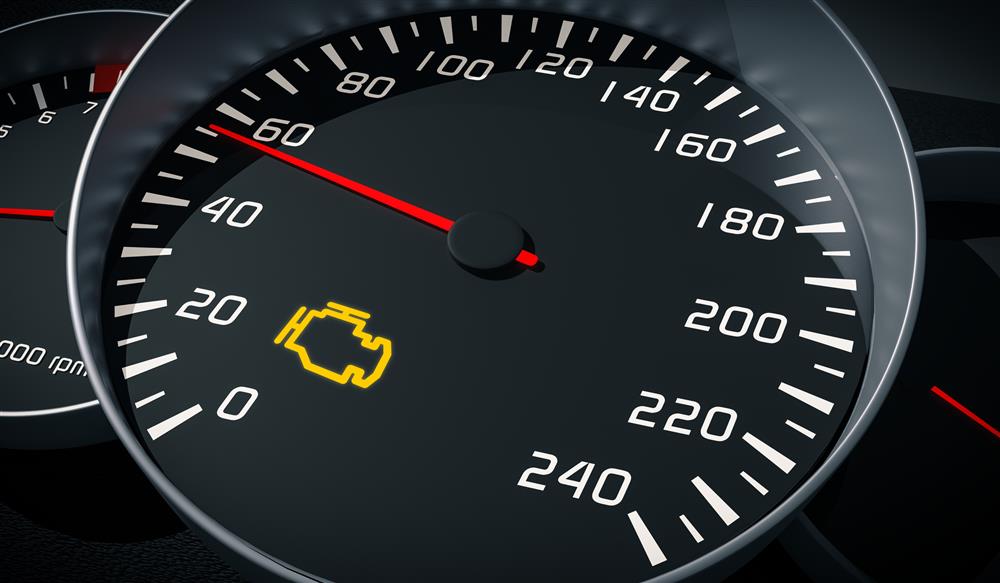
Seeing the Check Engine Light illuminate on your dashboard can cause anxiety for any driver. This light indicates a potential problem with your vehicle's transmission system. Do you know how long you can safely continue driving before the issue becomes serious?
Let us help explain the factors that determine when it's time to stop driving with the Check Engine Light on.
Causes of the Engine Light Turning On
The Check Engine Light turning on can have several underlying causes that require different solutions. Here are some of the most common reasons this nervous light may illuminate:
- Loose Gas Cap - A loose or faulty gas cap allows evaporative emissions to leak out, triggering an emissions system code that turns on the transmission warning light as well. Thankfully, this is one of the simplest fixes - tightening or replacing the gas cap typically resolves the issue.
- Sensor Failure - Modern vehicles have sensors that monitor transmission temperature, speed, fluid pressure and more. If one of these vital sensors fails or sends incorrect signals, it can activate the transmission light. A diagnostic scan at a shop can identify the faulty sensor that needs replacement.
- Low Fluid Level - Not having enough transmission fluid can cause overheating, increased friction, and deterioration of transmission components over time. Low fluid indicates a leak or issue with shifting and will trigger the light. Checking the dipstick and topping off or changing the fluid resolves this cause.
Identifying the specific reason the Check Engine Light is illuminated is crucial to understanding if it is safe to continue driving or if immediate repair is required. Consulting the owner's manual or a professional mechanic can help diagnose the issue accurately based on the fault codes stored.
Potential Consequences of Driving with the Check Engine Light On
Here are some key potential consequences of continuing to drive with the Check Engine Light illuminated:
- Greater Transmission Damage - Driving with an underlying issue can worsen any mechanical problems or wear and tear. Transmission components like clutches, gears, and bearings depend on proper lubrication and operation. Prolonged abnormal functioning often leads to internal damage and eventual failure.
- Shifting Difficulties - Depending on the specific problem, you may experience delayed, jerky or hard shifting when the light is on. Faulty sensors or low fluid can prevent smooth gear changes, presenting a safety hazard.
- Increased Repair Costs - The longer you drive with transmission problems, the more likely major repair or replacement will be needed. Minor issues can turn into major faults quickly with continued use, resulting in higher shop bills down the road.
- Reduced Power Transfer - An unhealthy transmission may slip or fail to efficiently transfer engine power to the wheels. This decreases acceleration and performance. Fuel efficiency can also suffer due to power loss through the drivetrain.
- Complete Breakdown Risk - If the transmission fully fails, your vehicle could leave you stranded. Continuing to drive once issues appear dramatically increases the chances of a roadside breakdown. This also creates hazardous situations if failure occurs in traffic.
- Safety Hazards - Slipping gears or inability to accelerate/decelerate smoothly presents risks. Reacting appropriately in traffic or dangerous conditions may be compromised with transmission problems.
Addressing the warning promptly reduces further damage, repair costs, and safety risks. Understanding these potential consequences informs smart decisions to avoid breakdowns or accidents.
How Long Can You Drive with the Check Engine Light On?
There are some key factors that determine how long you can safely drive with the warning light illuminated.
- The specific cause of the warning light - Minor issues like a loose gas cap may allow brief continued driving without much concern, while serious mechanical problems like low fluid or a worn clutch require pulling over and repairing immediately.
- The presence and severity of any symptoms while driving - Are you experiencing slipping gears, trouble accelerating or other driveability issues? Severe transmission symptoms mean you should stop driving right away, while mild or no symptoms may mean a short trip to the repair shop is possible.
- Mileage driven since the initial warning light - The less distance you've traveled with the light on, the less likely you've already caused significant wear or damage through continued operation.
- External driving conditions at the time - Stop-and-go traffic and extreme weather increase strain on a compromised transmission, so drive with extra care or avoid these conditions altogether.
- Availability of transmission repair or service - Can you pull over or have the vehicle transported to a shop right away? The sooner you can have it properly diagnosed and repaired, the better.
- Manufacturer recommendations - Your owner's manual may provide guidance on whether you can drive short distances to the mechanic after seeing the transmission light.
While the specific safe distance depends on your unique situation, the best practice is to stop driving within a few miles or less once you see the Check Engine Light and seek professional diagnosis and service immediately. This minimizes the chances of a roadside breakdown or permanent damage. Be cautious and listen to your vehicle's warning signs.
Transmission Rebuild, Replacement, Repair & Service
The Check Engine Light is not something to ignore - it likely indicates a serious issue that requires prompt attention. Driving any substantial distance with the light illuminated risks damaging your vehicle and compromising your safety.
You should stop driving as soon as safely possible once you see the light come on. Ongoing operation may exacerbate mechanical problems or wear. The longer you drive, the more likely major repairs or replacements become necessary down the road.
For trusted transmission service and peace of mind for the road ahead, choose the specialists at Circle D Transmission.
Contact us today to schedule an appointment or quotation for your vehicle. We service all makes and models.
